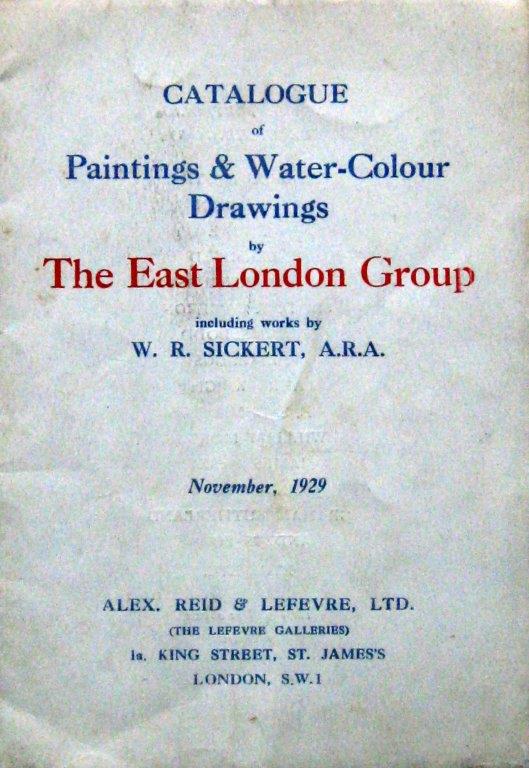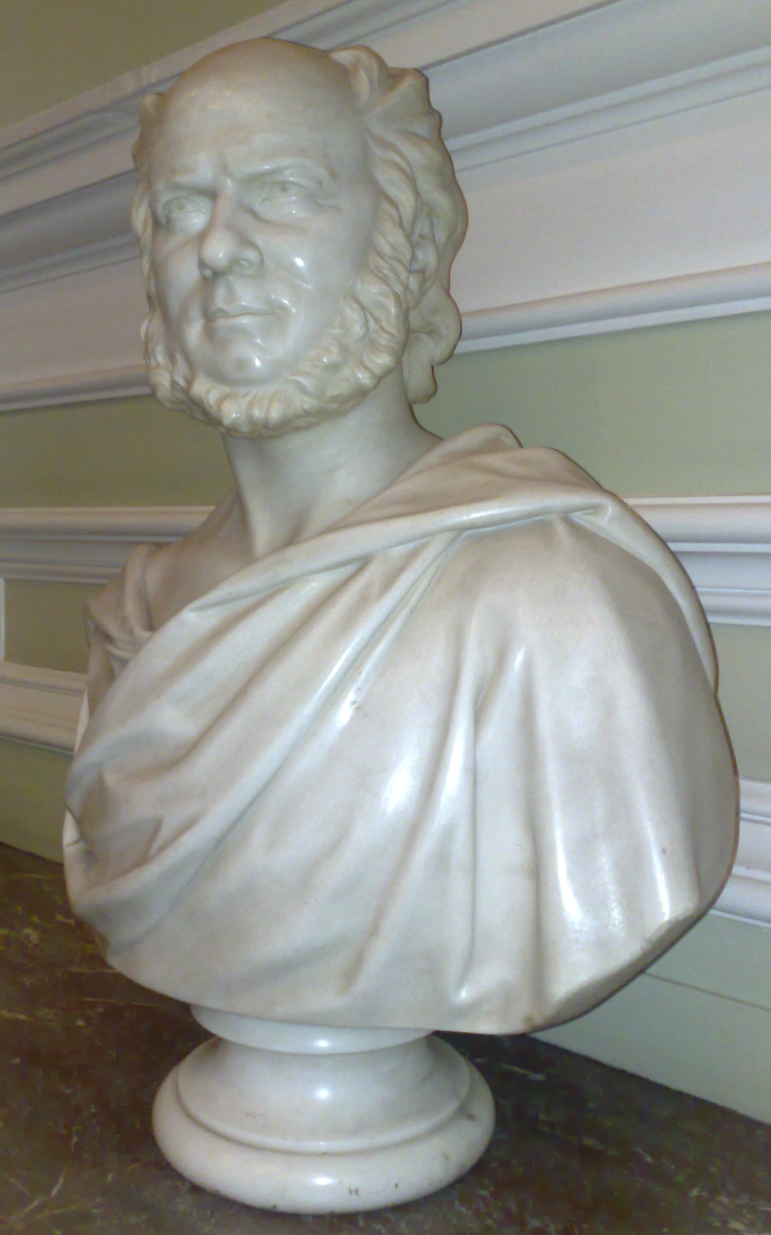|
Ernest Gambart
Jean Joseph Ernest Theodore Gambart (12 October 1814 – 12 April 1902) was a Belgian-born English art publisher and dealer who dominated the London art world in the middle of the nineteenth century. Life and career Gambart was born in Kortrijk, the son of a printer, binder and bookseller. By the age of 19, he had moved to Paris where he established his own print and papermaking business. He soon became known to the well-established Goupil print publishers, for whom he moved to England in 1840 to establish a branch in London. He soon struck out on his own again in 1842, this time in partnership with one Mr. Junin, to form the company Gambart & Junin which specialised in the import of art prints from Europe. The company was a success, and by early in 1844, the company was established as publishers as well as importers and exporters. Art publisher Gambart soon gained a reputation as a leading publisher of fine art prints. He established fair and mutually beneficial agreements with ... [...More Info...] [...Related Items...] OR: [Wikipedia] [Google] [Baidu] |
Gambart Ernest , named after Jean-Félix Adolphe Gambart
{{disambig ...
Gambart may refer to: * Ernest Gambart, French-born artist and print publisher in London * Jean-Félix Adolphe Gambart, French astronomer * Gambart (crater) Gambart is a small lunar impact crater on the Mare Insularum, near the central region of the Moon. It is named after French astronomer Jean-Félix Adolphe Gambart. It can be located to the south-southeast of the prominent ray crater Copernicus. ... [...More Info...] [...Related Items...] OR: [Wikipedia] [Google] [Baidu] |
Charles George Lewis
Charles George Lewis (13 June 1808 – 16 June 1880) was a British printmaker. Life The second son of Frederick Christian Lewis, and brother of John Frederick Lewis, he was born in Enfield, Middlesex. He was instructed in drawing and engraving by his father. Lewis retired in about 1877, and died suddenly from apoplexy at his residence at Felpham, near Bognor, on 16 June 1880. He was buried in Felpham churchyard. Works Lewis had a facility in etching, and in combining line engraving, stipple, and mezzotint. Many of his best-known plates were after the works of Sir Edwin Landseer. The earliest of these was ''Hafed'', published in 1837. Besides these were smaller plates after works of Landseer, most of which had previously been engraved by Thomas Landseer and others. His etchings after Landseer began with ''To-ho!'' published in 1830, and included the set of eight plates of ''The Mothers''. Lewis engraved also some plates after Rosa Bonheur.''Bouricairos crossing the Pyrenees' ... [...More Info...] [...Related Items...] OR: [Wikipedia] [Google] [Baidu] |
Spa, Belgium
Spa (; wa, Spå) is a city and municipality of Wallonia located in the province of Liège, Belgium, whose name became an eponym for mineral baths with supposed curative properties. It is situated in a valley in the Ardennes mountains south-east of Liège and south-west of Aachen. In 2006, Spa had a population of 10,543 and an area of , giving a population density of . Spa is one of Belgium's most popular tourist destinations, being renowned for its natural mineral springs and production of "Spa" mineral water, which is exported worldwide. The motor-racing Circuit de Spa-Francorchamps, just south of the nearby village of Francorchamps, also hosts the annual Formula One Belgian Grand Prix and various endurance races such as the 6 Hours of Spa-Francorchamps. The world's first beauty pageant, the Concours de Beauté, was held in Spa on 19 September 1888. The town also hosted the Tour de France on 5 July 2010, when stage 2 of the race ended there. In 2021, Spa became part ... [...More Info...] [...Related Items...] OR: [Wikipedia] [Google] [Baidu] |
Bruton Street
Bruton Street is a street in London's Mayfair district. It runs from Berkeley Square in the south-west to New Bond Street in the north-east, where it continues as Conduit Street. Notable residents have included Field Marshal John Campbell, 2nd Duke of Argyll, and Richard Brinsley Sheridan. On 21 April 1926, Queen Elizabeth II was born at No. 17, the London home of her maternal grandfather, the Earl of Strathmore and Kinghorne. The house was commonly thought to have been damaged in the Blitz and demolished in the aftermath, but archival documents at the British Library prove that the house had been demolished by property developers between 1937 and 1939, before the start of the war. The fashion designer Norman Hartnell Sir Norman Bishop Hartnell, KCVO (12 June 1901 – 8 June 1979) was a leading British fashion designer, best known for his work for the ladies of the royal family. Hartnell gained the Royal Warrant as Dressmaker to Queen Elizabeth in 1940, an ... lived and ... [...More Info...] [...Related Items...] OR: [Wikipedia] [Google] [Baidu] |
Lefevre Gallery
The Lefevre Gallery (or The Lefevre Galleries) was an art gallery in London, England, operated by Alex. Reid & Lefevre Ltd. The gallery was opened at 1a, King Street, St James's, in 1926, when rival art dealers Alexander Reid and Ernest Lefevre joined forces. Upon Reid's death in 1928, his son, A J McNeill Reid succeeded him. Lefevre resigned in 1931. In 1950, the gallery relocated to premises at 30, Bruton Street, Mayfair. Among artists whose first British solo exhibitions were hosted by the gallery were Salvador Dalí, Edgar Degas, André Derain, L. S. Lowry, Amedeo Modigliani, Henri Rousseau, Gregorio Prieto and Georges Seurat, It also held the first London exhibitions for Bernard Buffet, Balthus and René Magritte. Others who exhibited there included Francis Bacon, Lucian Freud, Walter Sickert, Wyndham Lewis, and the East London Group. The gallery closed in 2002, citing competition from auction houses, changes in tax on works imported from outside the European Union ... [...More Info...] [...Related Items...] OR: [Wikipedia] [Google] [Baidu] |
Regent's Park
Regent's Park (officially The Regent's Park) is one of the Royal Parks of London. It occupies of high ground in north-west Inner London, administratively split between the City of Westminster and the Borough of Camden (and historically between Marylebone and Saint Pancras parishes). In addition to its large central parkland and ornamental lake, it contains various structures and organizations both public and private, generally on its periphery, including Regent's University and London Zoo. What is now Regent's Park came into possession of the Crown upon the dissolution of the monasteries in the 1500s, and was used for hunting and tenant farming. In the 1810s, the Prince Regent proposed turning it into a pleasure garden. The park was designed by John Nash and James and Decimus Burton. Its construction was financed privately by James Burton after the Crown Estate rescinded its pledge to do so, and included development on the periphery of townhouses and expensive terrace dw ... [...More Info...] [...Related Items...] OR: [Wikipedia] [Google] [Baidu] |
Avenue Road, London
Avenue Road is a street in the Swiss Cottage and St John's Wood districts of London, known for having some of the highest home property prices in the United Kingdom. The street is popular with buyers who have replaced older houses with large mansions. Location Avenue Road forms the entire length of the B525, and runs from the Swiss Cottage gyratory system in the northwest to Prince Albert Road, near Regent's Park, in the southeast. Its short continuation southwards, on a bridge over the Regent's Canal, is called North Gate. Avenue Road is 1 km long. History Development of the Hampstead portion of Eyre Estate (known today as St. John's Wood) began in 1802 and was led by architect John Shaw Sr. In 1826, after the Finchley Road Act of 1826 passed, a new road that headed northward into the Hampstead portion of Eyre Estate's land was developed. and was built by 1829. By 1842, several houses called Regent's Villas were built in the Hampstead section of Avenue Road, and by 1852, ... [...More Info...] [...Related Items...] OR: [Wikipedia] [Google] [Baidu] |
Palais De Marbre Nice
{{disambig, surname ...
Palais () may refer to: * Dance hall, popularly a ''palais de danse'', in the 1950s and 1960s in the UK * ''Palais'', French for palace **Grand Palais, the Grand Palais des Champs-Elysées **Petit Palais, an art museum in Paris * Palais River in the French ''département'' of Deux-Sèvres * Palais Theatre, historic cinema ("picture palace") in Melbourne, Australia *Richard Palais (born 1931), American mathematician *Le Palais, a commune in Morbihan departement, France See also *Palais Royal (other) * Palai (other) * Palace (other) * Palas (other) A palas is that part of a medieval imperial palace or castle which contains the great hall and other prestigious state rooms. Palas may also refer to: Places * Palas, Iran, a village in Iran * Palas, a former commune, nowadays a neighbourhood in ... [...More Info...] [...Related Items...] OR: [Wikipedia] [Google] [Baidu] |
Colnaghi
Colnaghi is an art dealership in St James's, central London, England, which is the oldest commercial art gallery in the world, having been established in 1760. Foundation The business that became the Colnaghi gallery was established by Italian firework manufacturer, Giovanni Battista Torre, in Paris, France, in 1760. Torre opened a shop with the name "Cabinet de Physique Expérimentale", where he sold scientific instruments, books and prints. In 1767, Torre's son Anthony Torre moved to London where he opened a sister shop, specialising in prints, in partnership with another Italian immigrant, Anthony Molteno. Giovanni Torre died in 1780, and in 1784 Anthony Torre hired Paul Colnaghi—newly arrived in Paris from Milan—to manage a new shop in Palais Royal, Paris. Paul Colnaghi (1751-1833) Paul Colnaghi was born in 1751 as Paolo Colnago, in the Brianza region of northern Italy. He was the younger child of the influential Milanese lawyer Dr Martino Colnago and Ippolita Colnag ... [...More Info...] [...Related Items...] OR: [Wikipedia] [Google] [Baidu] |
Joseph Gillott
Joseph Gillott (11 October 1799 – 5 January 1872) was an English pen-manufacturer and patron of the arts based in Birmingham. Pen manufacturing After a brief period of schooling, Gillott began working in the cutlery trade in his home town of Sheffield. In 1821 he moved to Birmingham, where he found employment in the steel toy trade, the technical name for the manufacture of steel buckles, chains and light ornamental steel-work generally. About 1830 he turned his attention to the manufacture of steel pens by machinery. His company rapidly became successful and Gillott was soon a very wealthy man. It was rumoured locally that he buried some of his money in his cellar so that it did not become known that he had acquired so much. He certainly spread his cash across a number of bank accounts in Birmingham. In 1840 he opened his Victoria Works; the business employed mainly girls. Gillott also invested in the new railway companies and especially in property and land – n ... [...More Info...] [...Related Items...] OR: [Wikipedia] [Google] [Baidu] |
Pall Mall, London
Pall Mall is a street in the St James's area of the City of Westminster, Central London. It connects St James's Street to Trafalgar Square and is a section of the regional A4 road. The street's name is derived from pall-mall, a ball game played there during the 17th century, which in turn is derived from the Italian ''pallamaglio'', literally ball-mallet. The area was built up during the reign of Charles II with fashionable London residences. It is known for high-class shopping in the 18th century until the present, and gentlemen's clubs in the 19th. The Reform, Athenaeum and Travellers Clubs have survived to the 21st century. The War Office was based on Pall Mall during the second half of the 19th century, and the Royal Automobile Club's headquarters have been on the street since 1908. Geography The street is around long and runs east in the St James's area, from St James's Street across Waterloo Place, to the Haymarket and continues as Pall Mall East ... [...More Info...] [...Related Items...] OR: [Wikipedia] [Google] [Baidu] |







.jpg)
